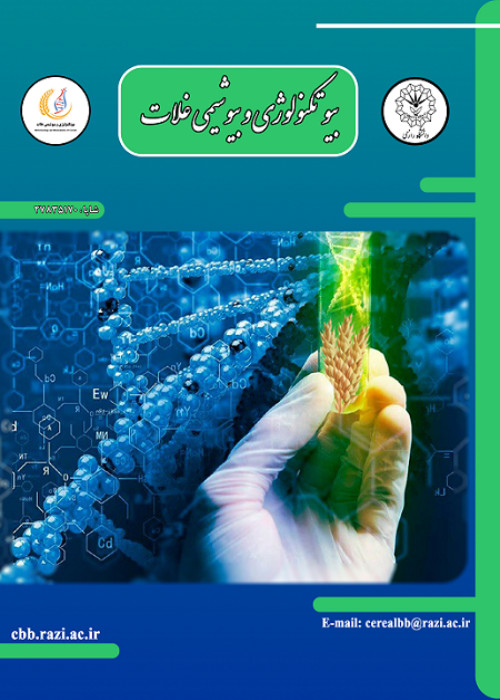Evaluation of different concentrations of growth regulators on the regeneration of mature embryo cultures of durum wheat genotypes
The most important and effective index in in vitro</em> culture is plant regeneration from induced callus, which are influenced by genotype and initial explant.
In this study, the response of five different durum wheat genotypes to callus regeneration under the influence of growth regulators was investigated using adult embryo culture in the tissue culture laboratory of the Faculty of Agriculture, Razi University, Iran. In this method, mature embryos of studied genotypes were isolated and cultured in an MS environment under the influence of BAP (6-benzylaminopurine) and IAA (Indole-3-acetic acid) growth regulators. Calluses obtained from mature embryos in the studied genotypes were subjected to four treatment levels of BAP hormone (0.5, 1, 2 and 2.5 mg/liter) and 1 mg/liter IAA. This experiment was carried out as a factorial 5×4 in the form of a completely randomized design in three replicates and with four samples in each replication. The percentage of regenerated calli was recorded in each genotype two to four weeks after transfer to the growth chamber.
The analysis of variance showed a very significant difference between the studied genotypes in terms of regeneration at the 1% probability level, and there was a significant difference between the different levels of BAP hormone at the 5% probability level. Investigating the effect of BAP hormone in the regeneration stage on the callus obtained from mature durum wheat embryos showed that the interaction between genotype and different hormone levels was insignificant. This shows that different hormone levels had similar behavior in all genotypes. The results of the statistical analysis showed that among the studied genotypes in terms of seedling regeneration percentage, Genotype "24-3-37" had the highest percentage of regeneration, and Genotype "240" had the lowest percentage of regeneration. The average comparison between different BAP hormone levels showed that the hormone level of 0.5 mg/liter showed the highest regeneration and the hormone level of 2.5 mg/liter showed the least regeneration, and the interaction effect of genotype on the hormone level was insignificant. Significant variation was observed between durum wheat genotypes in terms of regeneration percentage, indicating this trait's significant dependence on the genotype effect. A significant linear relationship was observed between the percentage of regeneration and different levels of hormones, which indicated a decrease in regeneration with increasing levels of hormones up to 2.5 mg/liter.
The different responses of durum wheat genotypes to callus induction and seedling regeneration can indicate the different capacities of genotypes when using them in breeding programs through embryo culture.
- حق عضویت دریافتی صرف حمایت از نشریات عضو و نگهداری، تکمیل و توسعه مگیران میشود.
- پرداخت حق اشتراک و دانلود مقالات اجازه بازنشر آن در سایر رسانههای چاپی و دیجیتال را به کاربر نمیدهد.


